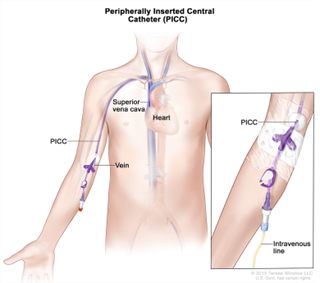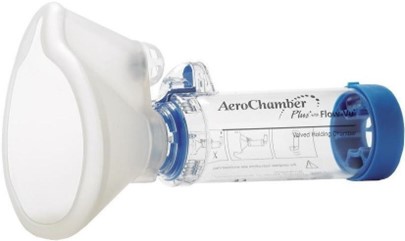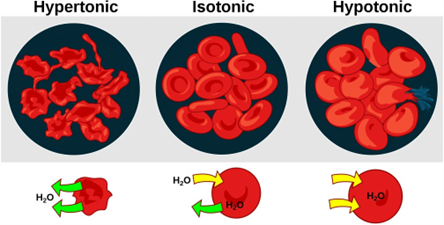Albuterol is prescribed for a 79-year-old male patient with severe COPD and Asthma You notice that he is having difficulty timing inhalation to receive the maximum dose of Albuterol. You give him a device to atach to the end of the Albuterol Inhaler called an aero chamber. You then educate him to before pumping the medication into the chamber.
Exhale
Hold his breath.
Take several deep breaths.
Inhale
The Correct Answer is A
Before pumping the medication into the chamber, you should educate the patient to exhale. This means that the patient should breathe out fully before using the inhaler. This helps to empty the lungs of air and create more space for the medication to be inhaled.


Nursing Test Bank
Naxlex Comprehensive Predictor Exams
Related Questions
Correct Answer is A
Explanation
Pulse oximetry is a non-invasive method of monitoring the oxygen saturation level in the blood. A normal range for oxygen saturation is between 95% and 100%. An oxygen saturation level of 89% indicates hypoxemia, which is a serious condition that can lead to tissue damage, organ failure, and even death if left untreated.
Therefore, the priority nursing action is to perform a respiratory assessment to determine the cause of the hypoxemia. This should include assessing the client's airway patency, breathing patern, lung sounds, and oxygen therapy if the client is already receiving it. The nurse should also observe for any signs of respiratory distress such as cyanosis, accessory muscle use, or difficulty breathing.

While it is important to document hypoxemia and report it to the healthcare provider, the priority at this time is to assess and intervene promptly to prevent further deterioration of the client's condition. Checking the placement of the pulse oximeter may be necessary if the reading is unreliable, but it is not the priority in this scenario.
Correct Answer is B
Explanation
Hypertonic solutions have a higher concentration of solutes (such as sodium, glucose, or mannitol) than the fluid in the body's cells, causing water to move out of the cells and into the bloodstream. This results in the shrinking of the cells and an increase in extracellular fluid volume.
Examples of hypertonic solutions include 10% dextrose in water (D10W), 3% saline, and 5% dextrose in 0.9% saline.
In contrast, isotonic solutions have the same concentration of solutes as the fluid in the body's cells, and hypotonic solutions have a lower concentration of solutes than the fluid in the body's cells.
Therefore, in this scenario, the nurse should administer a hypertonic solution to the client who requires IV fluids.
Whether you are a student looking to ace your exams or a practicing nurse seeking to enhance your expertise , our nursing education contents will empower you with the confidence and competence to make a difference in the lives of patients and become a respected leader in the healthcare field.
Visit Naxlex, invest in your future and unlock endless possibilities with our unparalleled nursing education contents today
Report Wrong Answer on the Current Question
Do you disagree with the answer? If yes, what is your expected answer? Explain.
Kindly be descriptive with the issue you are facing.
